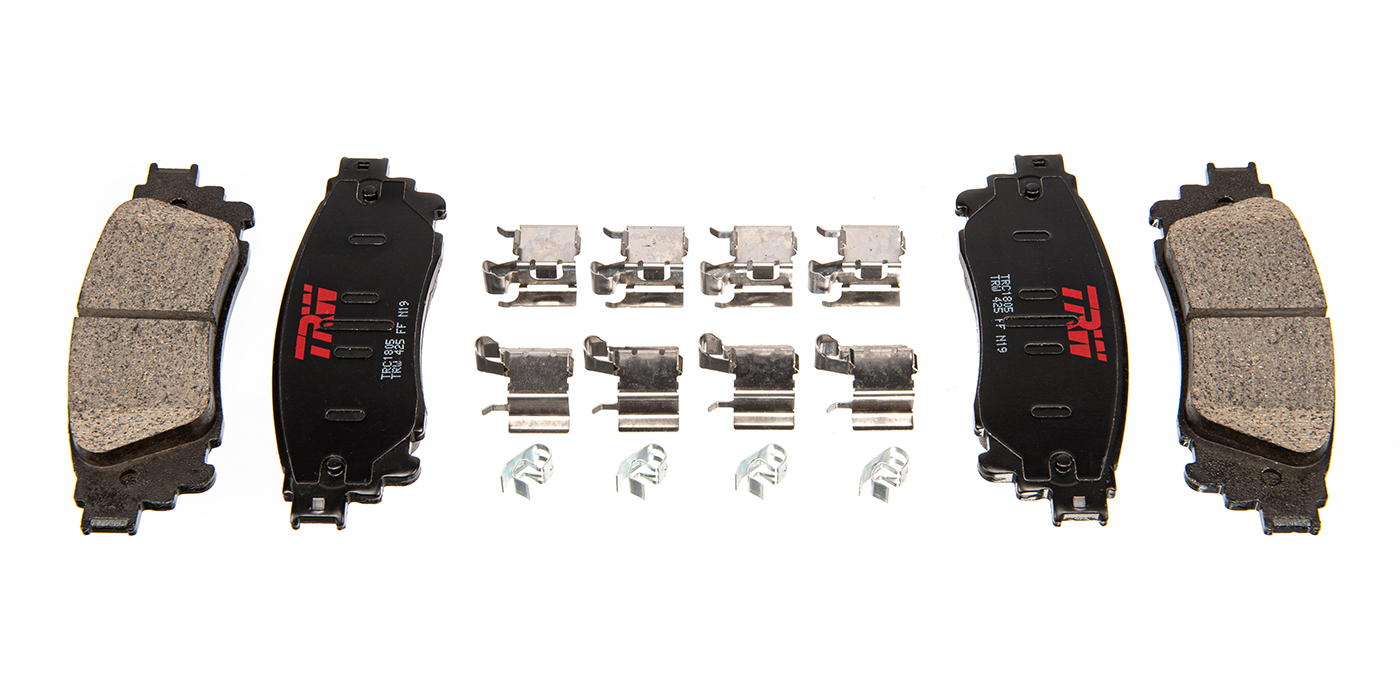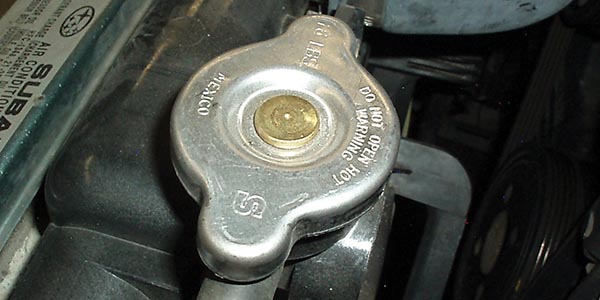A brake, according to the dictionary, is a device for arresting the motion of a wheel or vehicle. The original brake, like the original wheel, was invented before history was accurately recorded, but we know from pictures drawn by ancient Phoenicians and Egyptians that it is one of the oldest of mechanical devices.
For thousands of years the brake remained in its two simplest forms – one, a friction block applied by a lever to the circumference of a wheel, as applied on the horse-drawn wagon, and two, a simple wrapping action of brake band around the hub, axle, or drum, as used originally on spindles of various kinds of horseless vehicles.
The credit for first taking the scientific approach to friction materials goes to the Englishman, Herbert Frood.
He began to develop an idea. In his travels through the England, he had noticed how farmers and carriers coped with getting their horse-drawn carts down steep hills. They used to fasten an old boot to the wooden brakes, giving them a better grip against the metal rims of the wheels.
In 1897, using a water wheel-powered friction test machine set up in a shed, Frood experimented with numerous materials and bonding agents. In 1908, he hit upon resin-impregnated woven asbestos reinforced with brass wire.
Frood went into production and the brake shoes were an immediate success. He named his new company Ferodo, based on the letters of his name. The E is said to be for his wife, Elizabeth.
On an interesting side note, in 1902, a patent was issued to F. W. Lanchester for a disc braking system that’s similar to what we have today.
The biggest problem that Lanchester encountered with his new brake system was noise. Metal-to-metal contact between his copper linings and the metal disc caused an intense screech that sent chills through anyone within earshot. The problem was solved by Frood’s asbestos friction material.
What is Friction?
Friction is resistance offered to the movement of one body past another body with which it is in contact. Friction depends partly on the smoothness of the contacting surfaces. A greater force is needed to move two surfaces past one another if they are rough instead of smooth.
However, friction decreases with smoothness only to a degree; friction actually increases between two extremely smooth surfaces because of increased attractive electrostatic forces between their atoms.
Friction is really a factor of the amount of surface area contact between two or more objects. The more surface area contact, the more friction.
Coefficient of Friction
Any two surfaces rubbing against each other have a “coefficient of friction.” By friction we mean the alternate “catching” and “releasing” of the two rubbing surfaces, so rapidly, in most cases, that only a sliding motion is perceptible. The relation of the “catching” to the “releasing” gives us our “coefficient.” That is, if two substances are “caught” 4/lOths of the time, and “released” 6/lOths of the time, we say that they have a “coefficient of friction” of 0.4. If they were “caught” for 7.10ths of the time, they would have a “coefficient” of 0.7.
An engineer would use the formula “W” where “F” equals the force necessary to move a body in contact with another, and “W” equals the weight of the body. Thus if a car weighing 1,000 pounds had all wheels locked and it took a pull of 300 pounds to move it on a level road, the coefficient of friction of the road surface and tires would be .333, or 300 divided by 1,000.
Heat, dampness, speed of movement and many other factors cause the coefficient of friction to vary, so that it is a relative term, rather than a positive measurement.
The term “coefficient of friction,” as applied to brake lining, refers to the friction between that particular pad and the disc.
If the lining were applied to a wooden disc, its “coefficient of friction” in that case would be entirely different. A “high” coefficient is not always desirable.
Brake Actuation
The method used to force the shoes in the internal brake against the surface of the drum is termed its “actuation.” There are two general types in passenger car brakes – mechanical and hydraulic.
In the mechanical type, either a toggle, a wedge, or a cam and lever is used to force the shoe or shoes against the drum. With hydraulic actuation, the pressure of the foot on the brake pedal operates a piston which forces fluid through the fluid lines into the wheel cylinder expanding the pistons and forcing the shoes against the drum.
Air actuation and electric actuation are used on some truck brakes, but will not be discussed here.
The amount of self-energizing action may be increased or decreased by the design of the wheel brake, position of anchor pins, mounting of shoes and other factors.
Brake Function
Automotive engineers often refer to brakes as “heat machines,” because they transform the energy of motion into heat and dissipate the heat. Students in physics learn of the “law of conservation of energy,” which states, roughly speaking, that energy is never lost, but merely transformed from one form into another.
If you touch a match to an open can of gasoline, the gasoline burns and you have transformed the chemical energy of the gasoline directly into heat another form of energy, but it has served no useful purpose unless the heat is wanted, and controlled and used.
If you put the gasoline into the tank of an automobile however, a longer and interesting series of transformation takes place. Through the explosions in the cylinders of the automobile, the chemical energy of the gasoline is transformed into mechanical energy which turns the wheels and sets the car in motion. The mechanical energy is thus transformed into kinetic energy, or energy of motion.
If the clutch is thrown out on a level surface and the car allowed to roll to a stop, the kinetic energy is gradually transformed into heat through friction of the tires against the road, the friction of moving parts in axles and transmission, etc.
Apply the brakes and the same amount of energy is transformed into heat, but in a fraction of the time, through friction of lining against drum.
Six Times The Power
It has been pointed out that it takes six times the power to make an emergency stop than it does to start the car. Such a figure is relative, depending on the time element, since power is the product of energy times time. If it takes six seconds for the 10 hp engine to accelerate the car to 20 mph, and the brakes stop it in one second, they are exerting six times the power used to put the car in motion.
In the same situation, it would take twelve times the power of starting to stop the car in one-half second. Because one of today’s automobiles with good brakes makes an emergency stop in about one sixth the time used in accelerating to a certain speed, we use the phrase that it takes six times the power to stop as it does to start.
Lining Composition
Since brake lining’s job is to transfer the kinetic energy of motion into heat, it should have two chief characteristics. It should have a fairly high coefficient of friction so that heat is generated rapidly, and it should be heat resisting so that the heat generated does not break down or destroy the lining.
Stopping the Car
Most of our discussion so far has concerned stopping the wheels of the car. If an automobile were literally “geared to the road,” stopping the wheels would, of course, mean stopping the car. In actual fact, the contact between the car and the road consists of four small areas of the tire surface pressed against the road surface.
The brakes may stop the wheels, but the contact of the tires against the road stops the car, and right there is where a lot of variation is found.
Tire pressure, tire tread condition, road surface, roughness, water, mud, snow and temperature may increase or decrease the stopping distance of any particular car. It is important to keep one fact in mind; experiments have shown that the maximum stopping effect is obtained just before the wheel starts to slide.
Tire Inflation
The effect of tire pressure on braking is not generally understood among brake technicians. In actual practice, a comparatively soft tire tends to “grip” inequalities of the road surface to a greater degree than a hard tire, thus being less likely to skid.
In the 1930s, this action can be noticed on a roller-type brake tester. If one tire is considerably softer than the others, the soft tire tends to “wrap around” the roller and shows a higher stopping force on that wheel than would be shown if all tires were equally inflated. A difference of fifteen or twenty pounds in inflation pressure on opposite tires might change the leverage of braking action and thereby shortening the wheel radius on the soft tire, but such a difference is so noticeable that the brake technician can hardly miss it.
Road Surface
Stopping distances are determined generally by considering the type of road surface, since road surface generally varies more than tire surface.
Most stopping distances given in state laws or local ordinances specify that they apply to a stop on smooth, level, dry, concrete road surface, since this surface has been found to give the best unchanging stopping distance.
Other road surfaces will not permit stopping in as short a distance. Dry brick is next best to concrete, then cold asphalt, hot asphalt, limestone and dirt road surface in the order given, although each type will vary with age and local conditions of dust, heat, moisture, etc.












